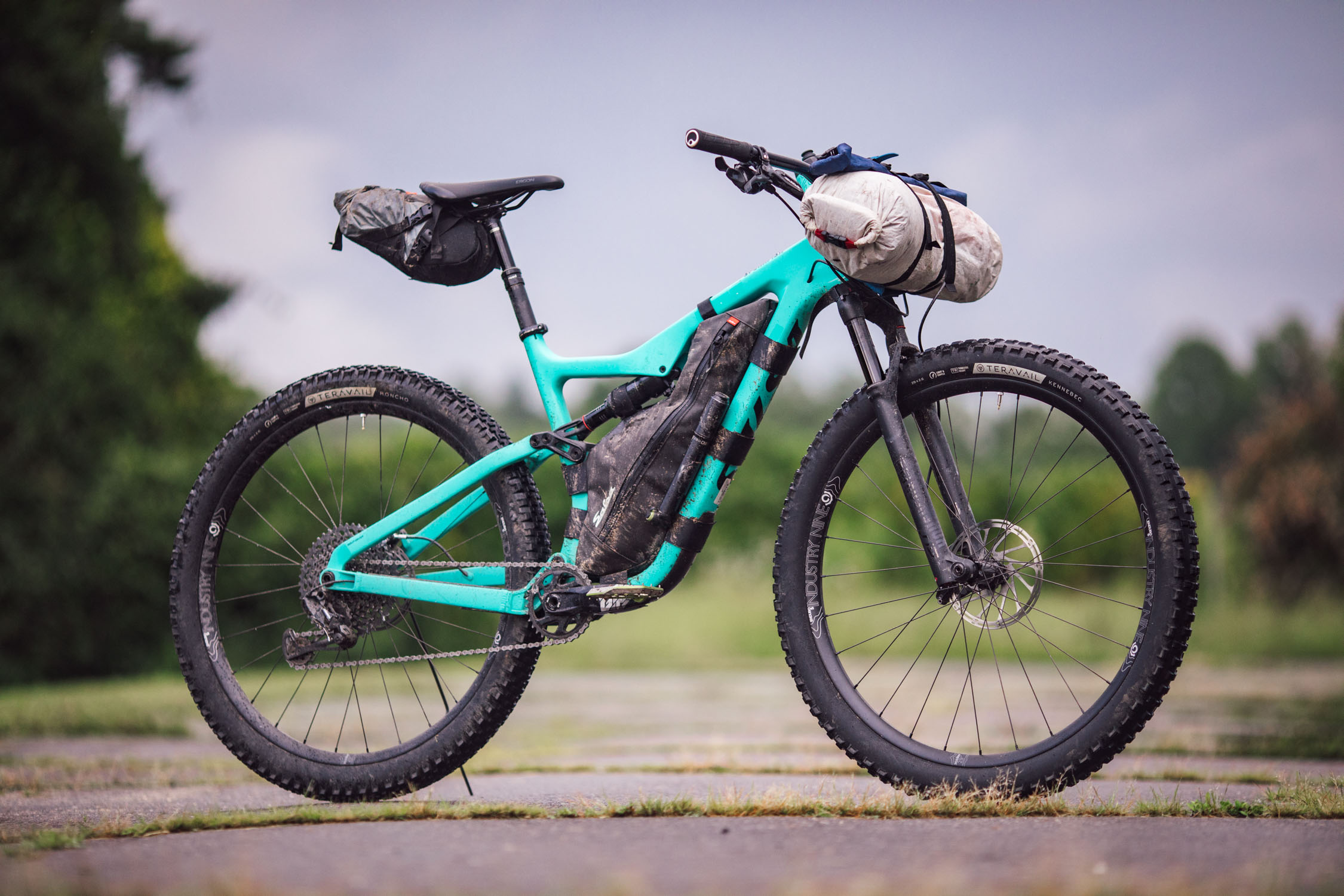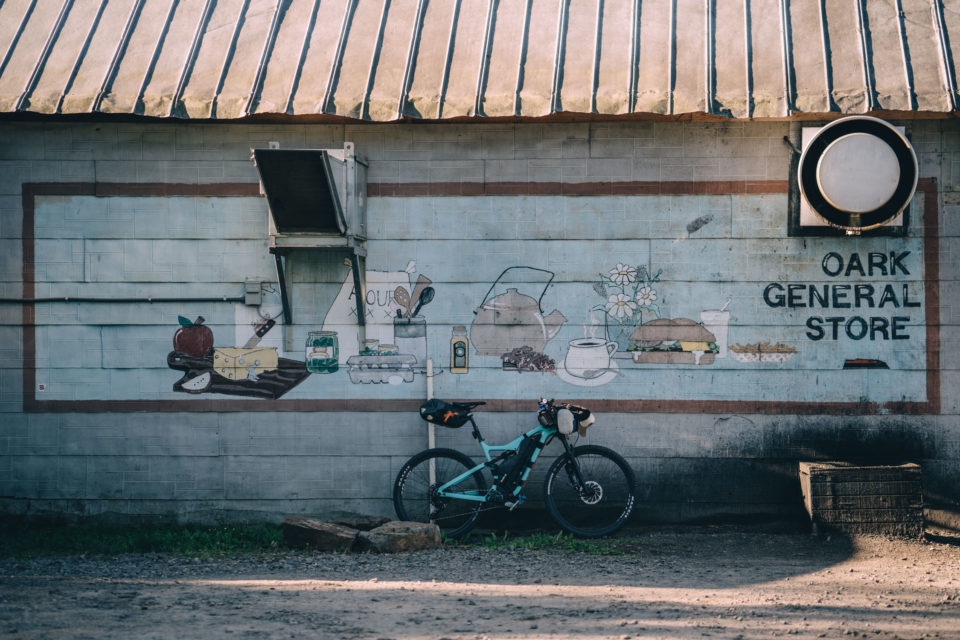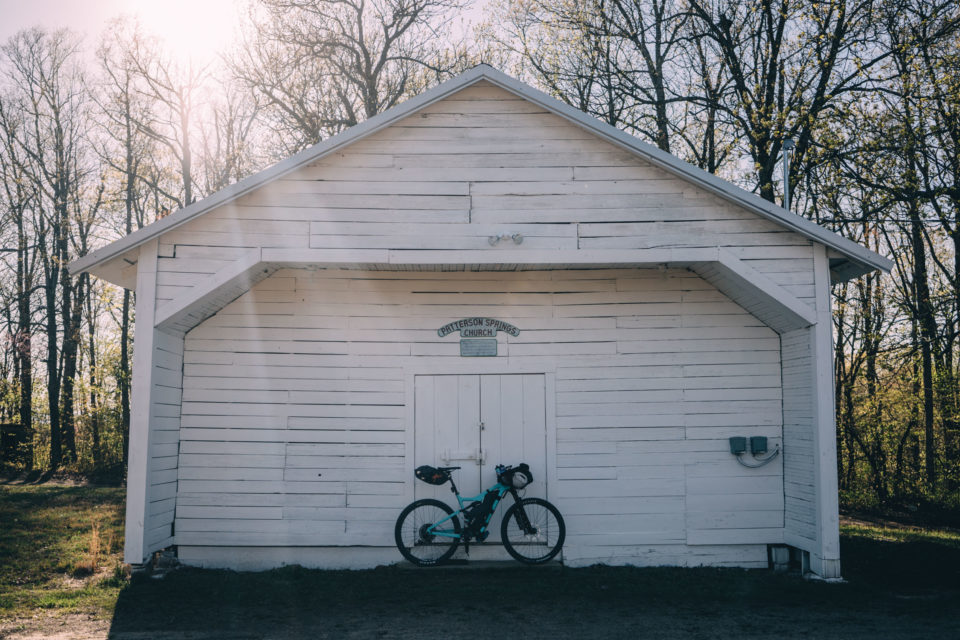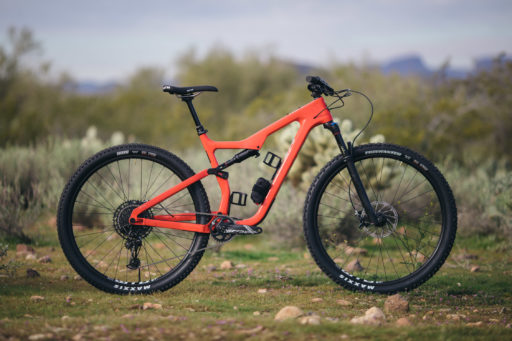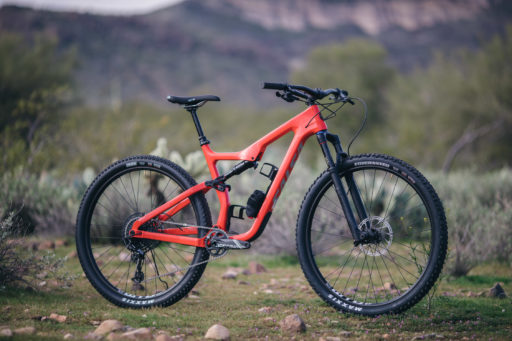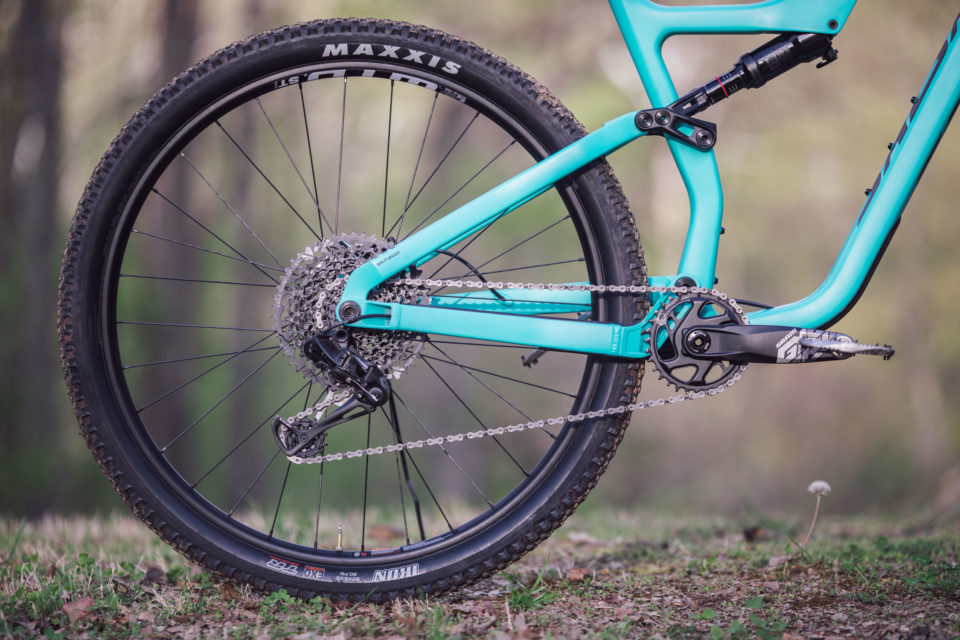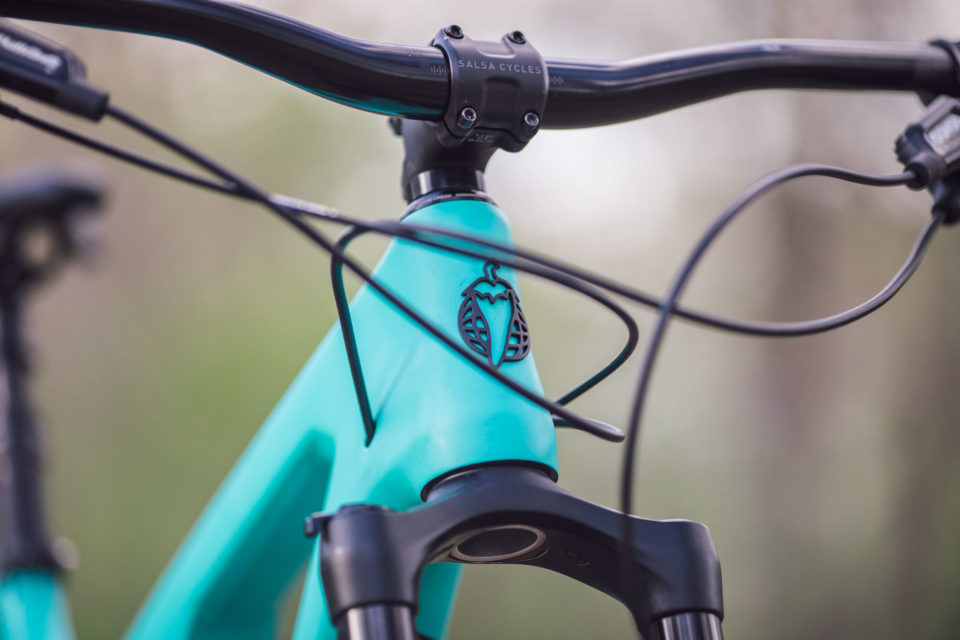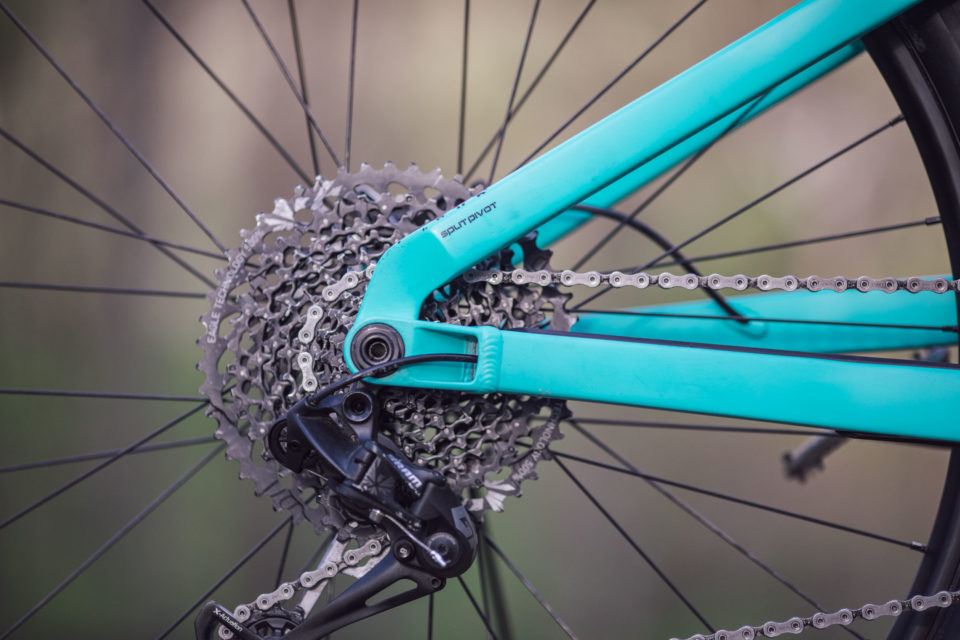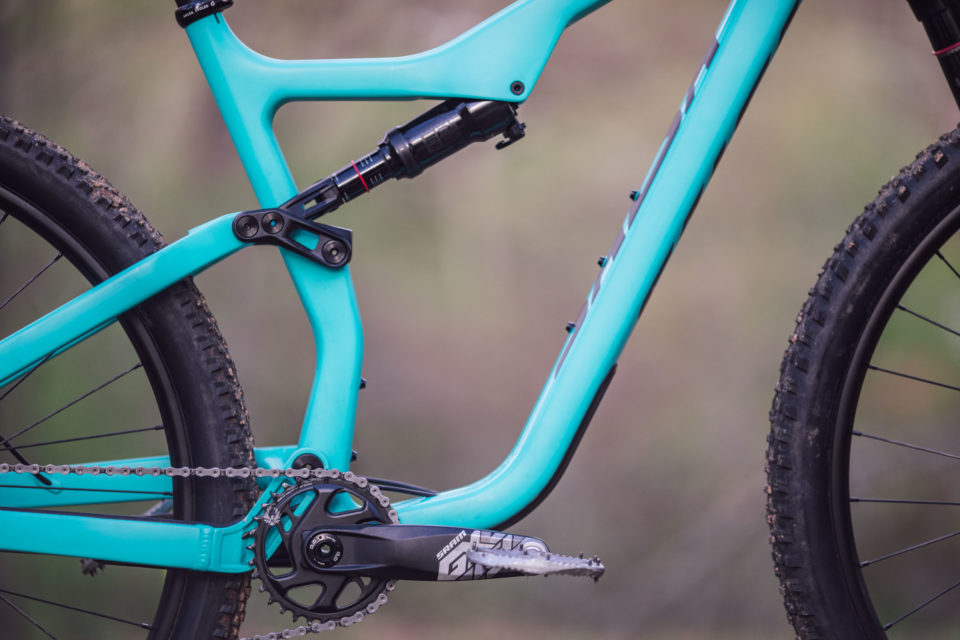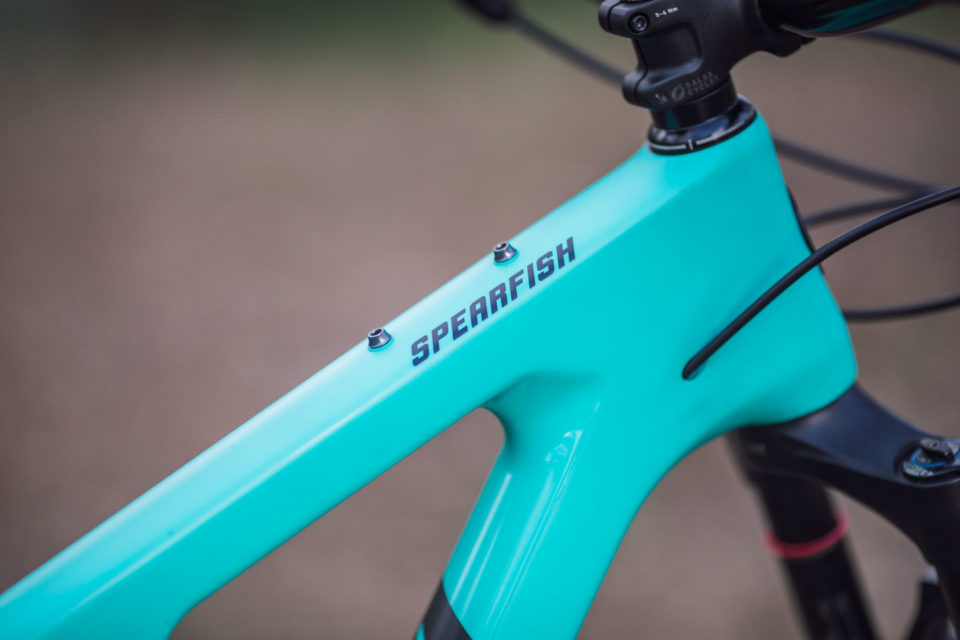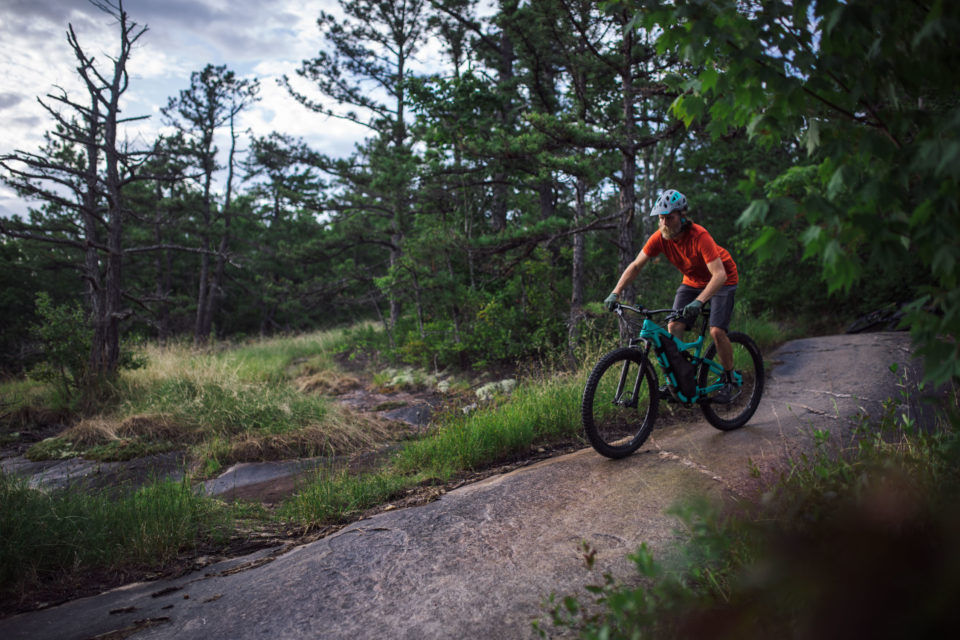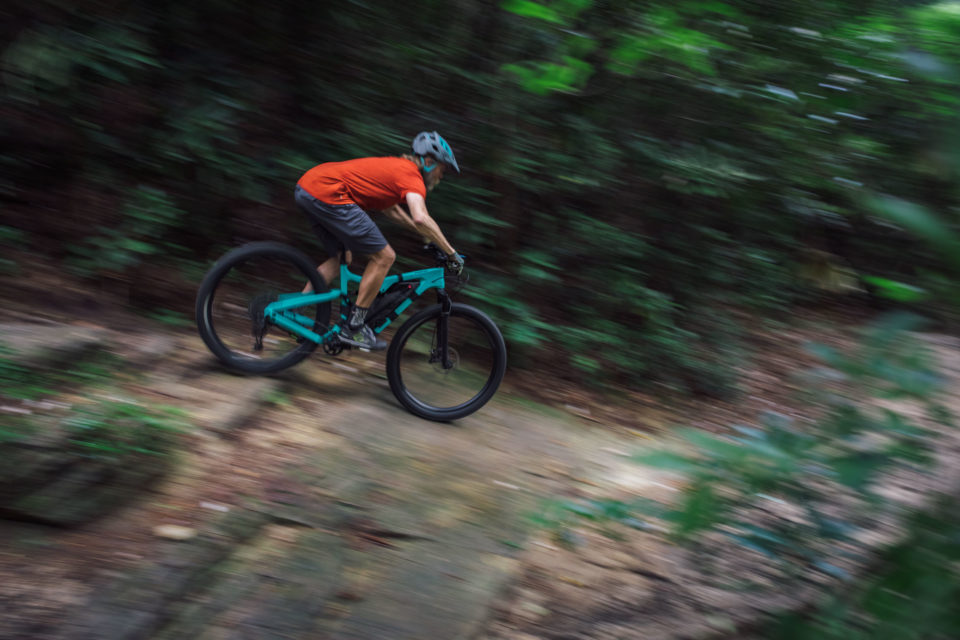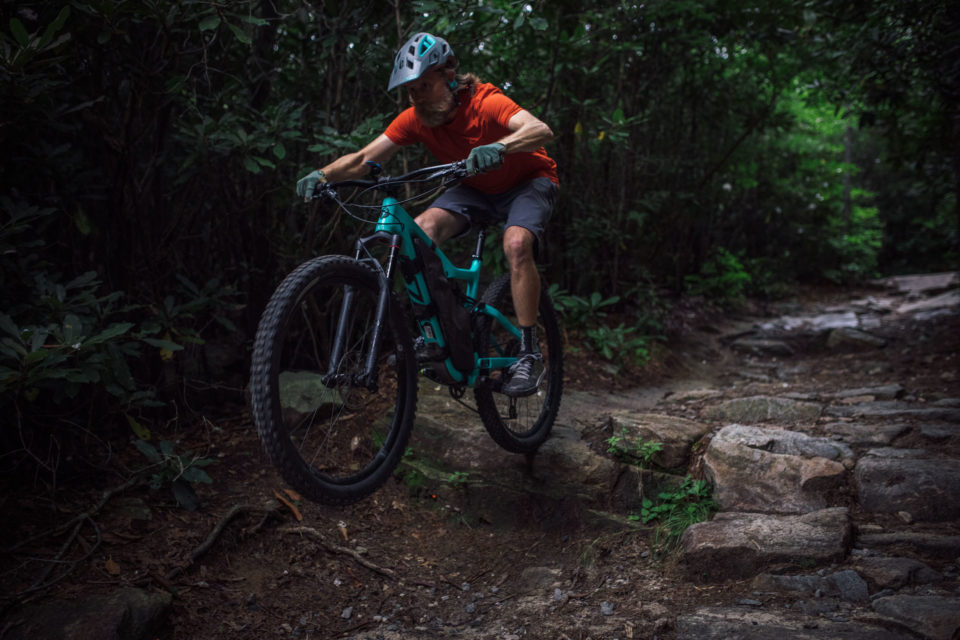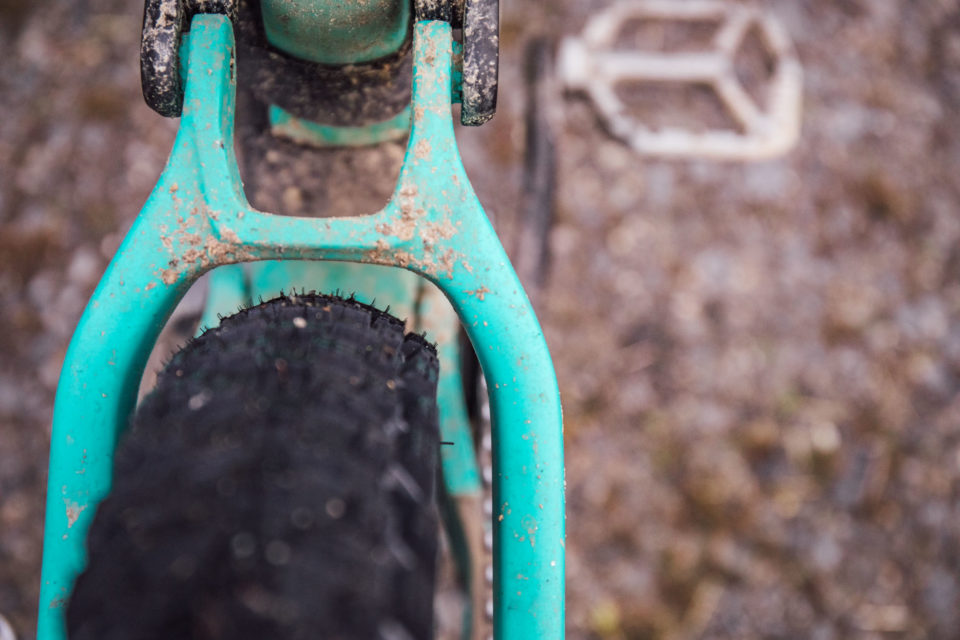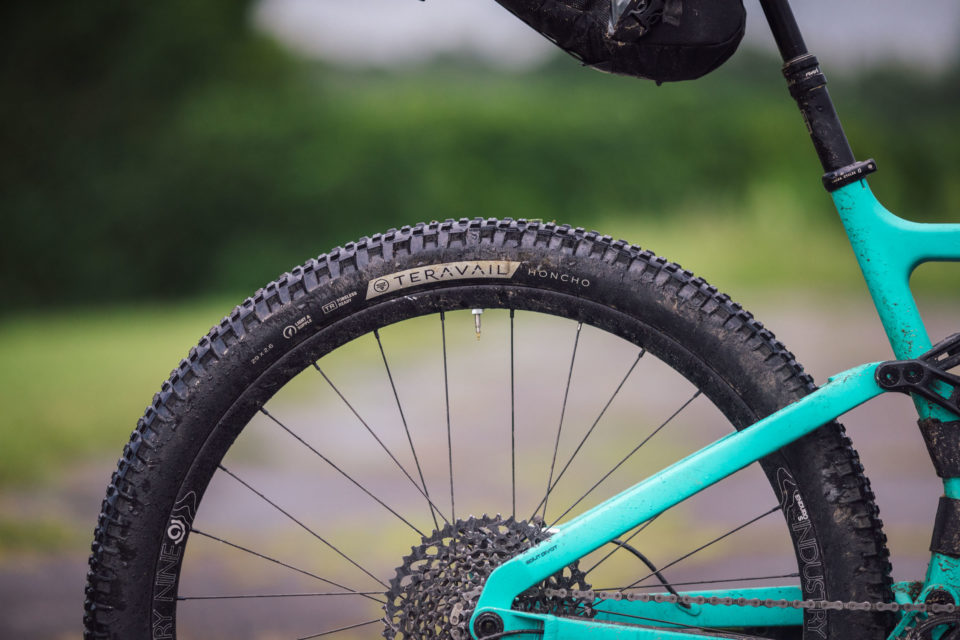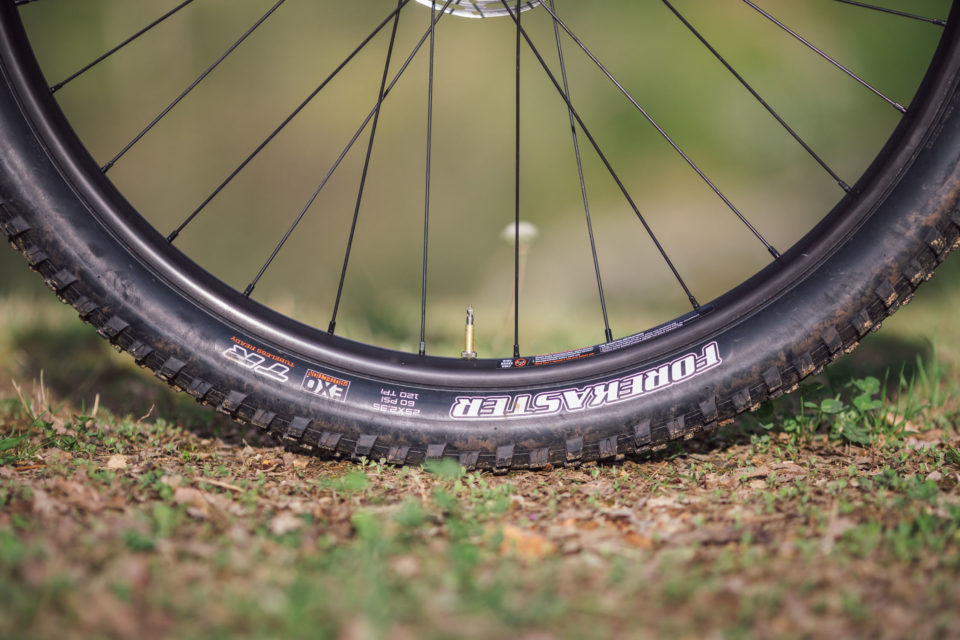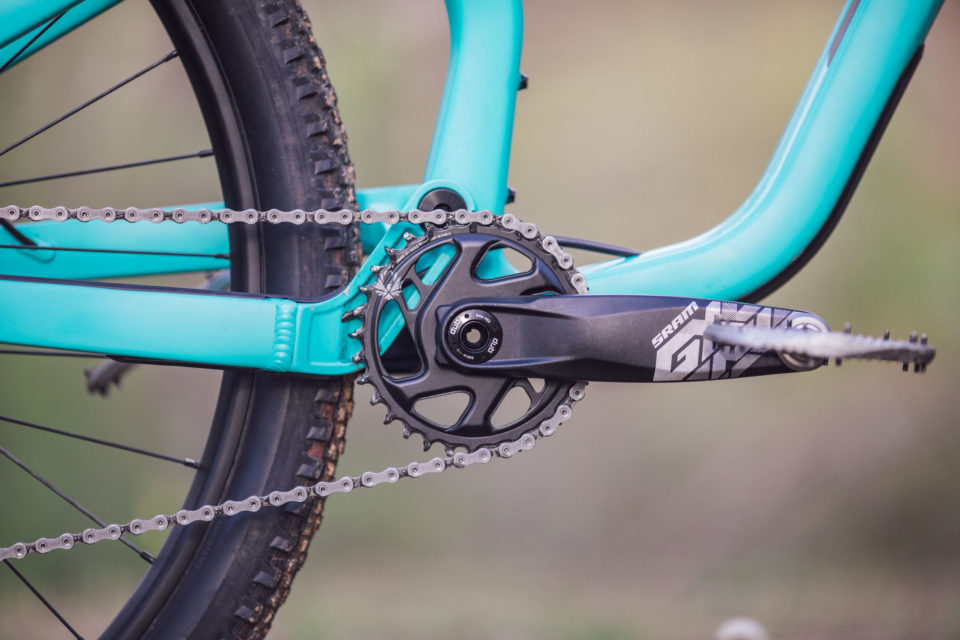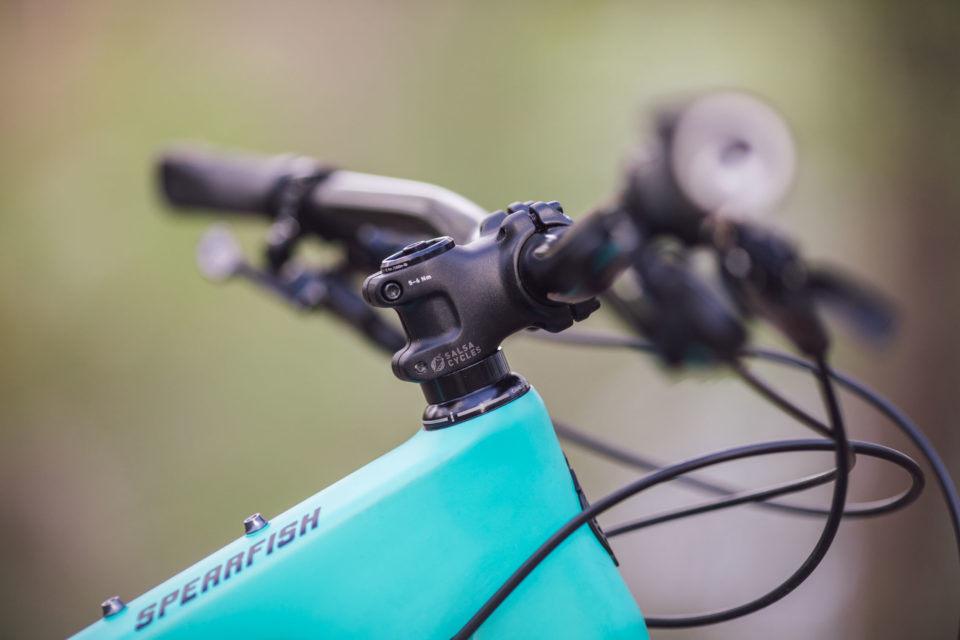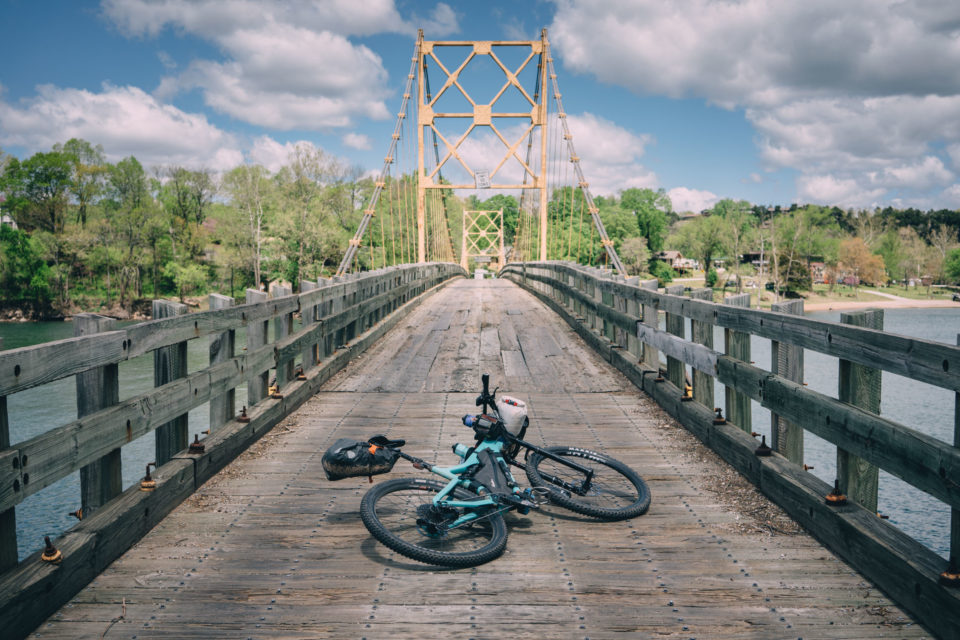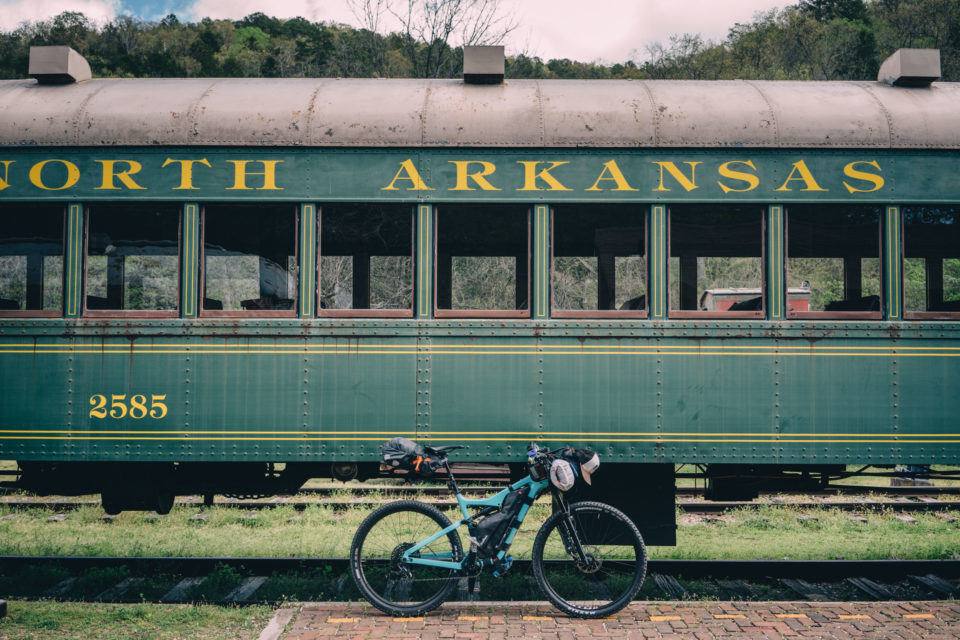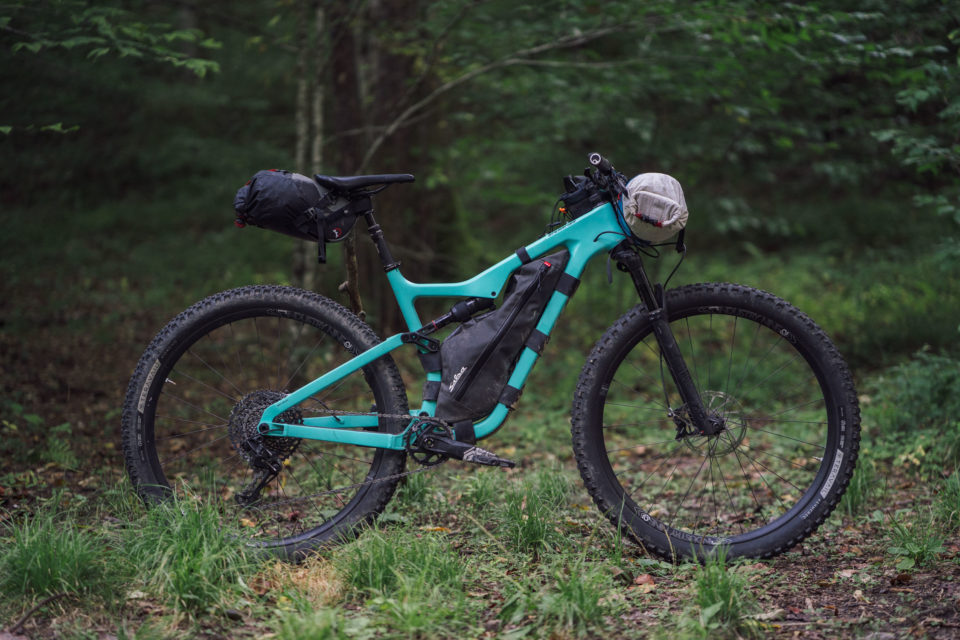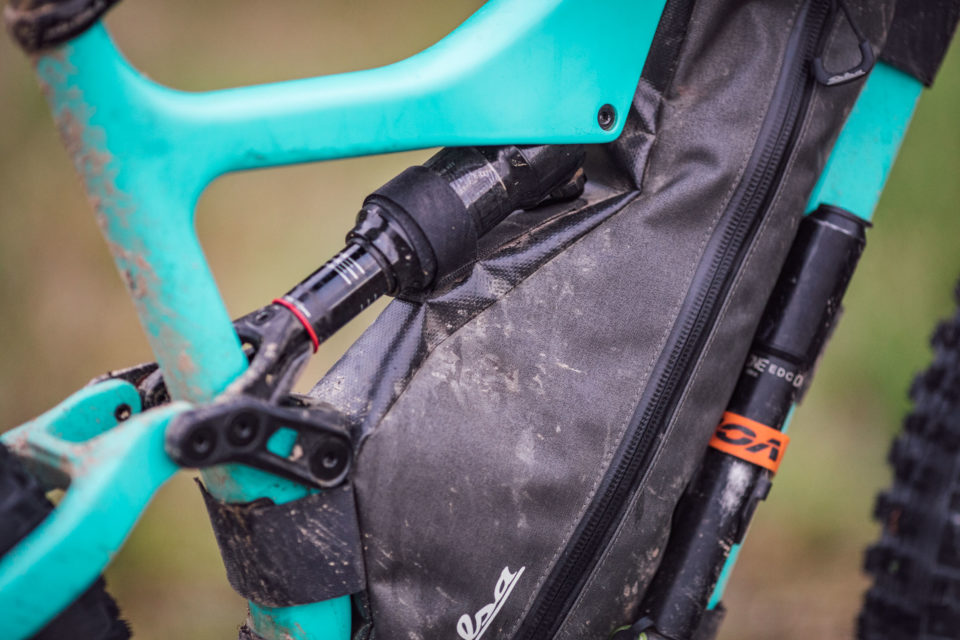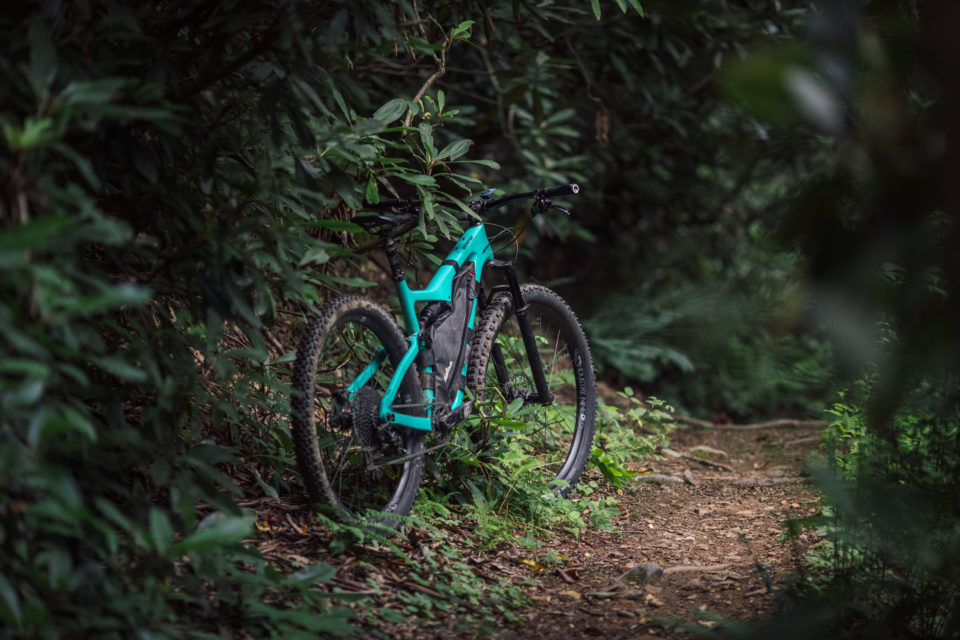Salsa Spearfish Review
Share This
We’ve been testing the latest Salsa Spearfish since May and have put over 1,500 miles on it for this long-term review. Find out how the Spearfish performs with 29 x 2.6” tires, what makes it best in class for bikepacking, and how it compares to other short-travel 29ers on the trail…
To preface, I’m going to keep the nuts and bolts portion of this Salsa Spearfish review relatively brief. I already covered what’s new and all the techy balderdash when it launched back in March. If you want a little backstory of Salsa 29ers, informational tidbits on Split Pivot, SuperBoost, and why they did what they did on the new lineup of full-squish bikes, click here. Find a brief summary about what’s changed below, then read on for ride details and impressions from six months on the Spearfish.
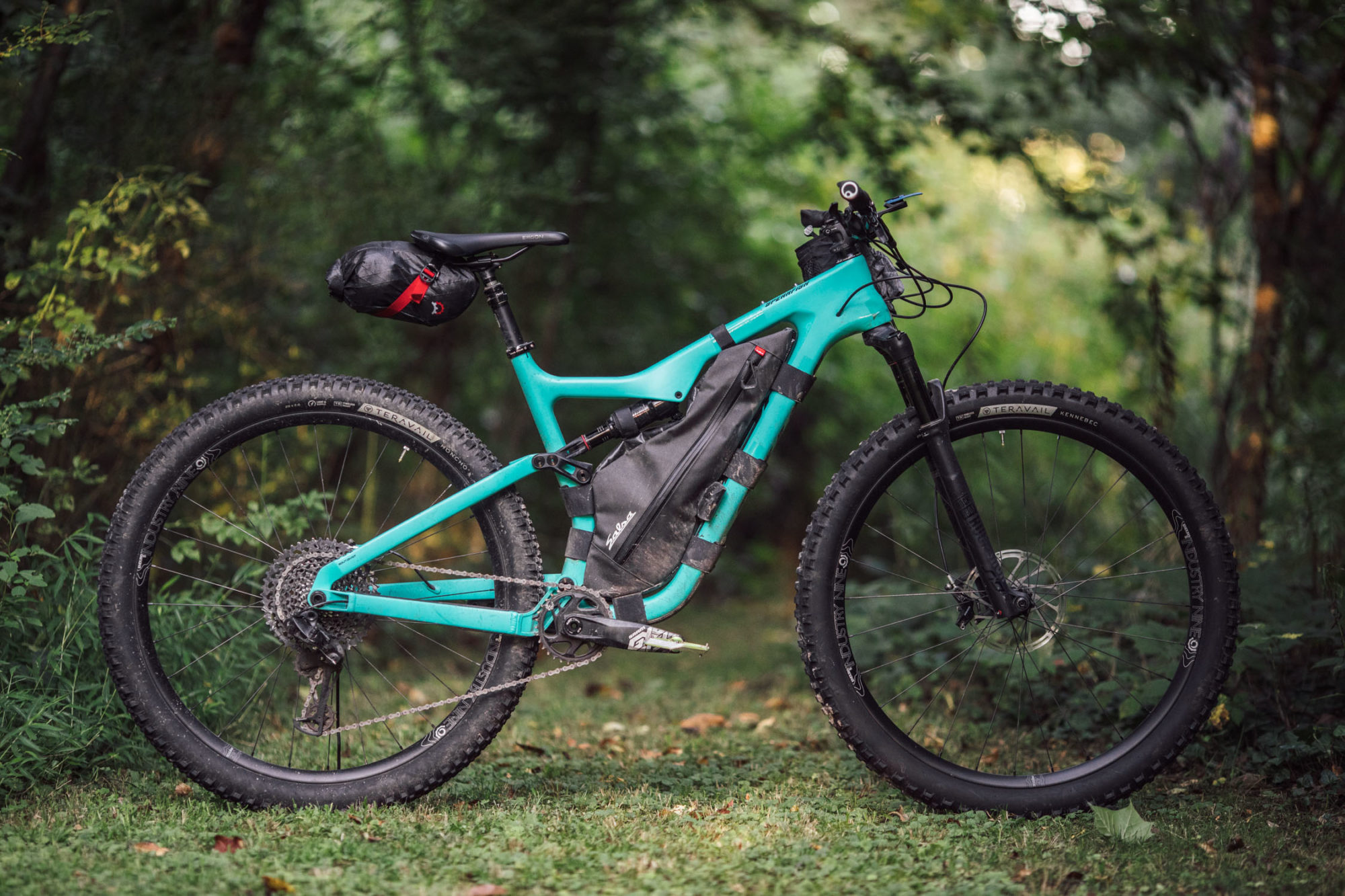
- Highlights
- Angles: 67.8° Headtube, 74.2° Seattube
- Chainstay: 432.4mm
- Bottom Bracket: 73mm threaded
- Hub specs: 15 x 110mm (front); 12 x 157mm (rear)
- Max Tire Size: 27.5 x 3.0″ / 29 x 2.6″
What changed, in summary
To summarize the first look post in a few short paragraphs, Salsa reengineered and relaunched the Horsethief, Rustler, and Spearfish with new Split Pivot suspension kinematics, 1x-specific drivetrain designs, larger tire clearances, and modern(ish) geometries to make them more progressive and to follow the direction set by competing full-suspension trail bikes. The Horsethief and Spearfish feature the same frame but they have different lengths of travel, achieved with differing forks, shocks, linkages, and rear triangles. Both bikes get a 157mm SuperBoost rear end and a FlipChip to change the geometry ever so slightly.
Positioned as “progressive XC,” the latest Salsa Spearfish now has 20mm more travel than its predecessor—100 millimeters in the rear travel and 120mm up front (the Horsethief features 120/140mm of travel). The Spearfish has a 1.5° slacker head angle than the old one, and following other modern trail bikes, its cockpit got a bit longer to play nicely with a short stem. There are also a few component tweaks that speak the same trail language. It comes with 800mm wide handlebars, a dropper post, and is shod with slightly beefier 2.3” tires. In typical Salsa fashion, it still has room for a 27.5 x 2.8” tires, or 29 x 2.6” rubber, which piqued my interest.
The Spearfish comes in four sizes: S, M, L, and XL. Geometry starts with a 67.8/68° head angle, and a 74.3/74.5° seat angle, depending on the chosen geometry mode. The chainstay changes by a millimeter from 433/432mm in each mode. The medium I’m testing has a 461/463mm reach, and a 1,186mm wheelbase.
There you have it. Now, on to the nitty gritty.
First impressions
Having already ridden the Horsethief and Rustler in Sedona during Salsa’s launch event, the Spearfish was the missing link. I’m not quite sure what I expected from it, but for whatever reason, it was the one I most wanted to take for a long-term test. Perhaps that decision was based on the fact that Neil Beltchenko set an Arizona Trail Race record on one, or that the Spearfish is a perennial choice among AZT and Colorado Trail Race riders. Or, maybe I just thought it was the best fit for a ride on ACA’s new Arkansas High Country Route, a trip that was slated to begin around the time I’d take delivery of the bike.
Having said all that, I guess I expected it to be fast. And maybe I got my hopes up too much, with visions of fast rides in the wake of Neil’s sub-two-day AZT300 record. But on first pedal, that’s not exactly the feeling I got from it. Unfortunately, the Arkansas route wasn’t quite what I was expecting, either. Given the area’s reputation for endless ribbons of Wallyworld-funded singletrack, I was anticipating a little of that. However, there was zero singletrack on the Northwest Loop that I rode. Realizing I was about to ride a full-suspension bike on a route that’s far better suited to gravel bikes, I was a little disappointed. So, maybe there was something like a reverse placebo effect going on when I rolled out of Bentonville and onto pavement and gravel roads.
To clarify, the Spearfish isn’t slow, it’s just not as fast as I expected on particular terrain and surfaces. Compared to the Ripley and Tallboy I’ve been testing, it just didn’t have that quick punch out of the gate, particularly on flat/rolling terrain, gravel, and pavement. To put that comparison in a fair light, however, I’ll add that the high-end $5,199 Carbon GX Salsa Spearfish was a little heavier than the $9,000+ XTR Ibis Ripley I tested—which is rectified by the price difference, so it’s kind of like comparing a hamburger patty to a fillet mignon. Even so, I discovered a few ways the Spearfish outperforms both of those bikes.
Before digging into more riding characteristics, one thing I noticed immediately is that the Spearfish’s frame has its own acoustics, oddly enough. Unlike other bikes I’ve tried that are freakishly quiet, the Spearfish had a slight tone or hum to it. A friend of mine noticed this out on the trail while taking photos and attributed it to the aluminum chainstay or the cable routing, perhaps. It’s not really bad or distracting, but it’s something I noticed while comparing those other bikes.

Climbing and Descending on the Spearfish
One place the Spearfish shines is while climbing. I found it to be one of the best climbers of the four short-travel 29ers I’ve tried this year. The Spearfish is perfectly suited to crawling through slow, techy ascents, and maintains its incredible stability at slow speeds. It also feels much faster and more efficient when climbing singletrack than it does on gravel and flattish areas. Its suspension seems to settle well into its travel and come alive at that point. Aside from its comparably minimal 100mm of rear suspension, the reason for this is in its geometry. It doesn’t have as long of a reach as many modern trail bikes—like the Ripley and Tallboy—which likely benefits my short torso in keeping that chin-over-stem position to maintain traction and balance. It’s a couple centimeters shorter than both of those bikes overall and has about a 10mm shorter reach than the Tallboy, and 15mm than the Ibis. It’s also not nearly as slack. Arguably, it isn’t slack at all. The Spearfish’s 67.8° headtube is 1.3° steeper than the Ibis and nearly a full 2° steeper than the Santa Cruz. And it has a remarkably low bottom bracket. Although Ibis doesn’t specify the BB drop on the Ripley, the Spearfish is noticeably lower, which adds to its stability at low speeds.
Salsa Spearfish in 29 x 2.6 mode
One of the things that drew me to the Spearfish is its ability to couple large volume and diameter 29 x 2.6” tires with a short travel platform. A couple weeks after the Arkansas trip, I mounted up a pair of 29 x 2.6” Teravails for the bulk of the testing period. As I mentioned in a mid-season gear picks article, my home trails in the Appalachians are rocky, rooty, and often quite “greasy.” It helps to have some big traction tires. For that reason, I fitted the Spearfish with a 2.6” Light and Supple Honcho in the back and the heavily lugged Kennebec up front, a rugged, trail-worthy combination. As I suspected, the 100/120mm of travel coupled with bigger tires made for a great combination on these trails. And there was plenty of clearance:
Flip Chip Geometry
That low bottom bracket also helps in the descending department, contributing to its playful and nimble handling. I found it to be more fleet-footed at slow-to-medium speeds than the Ibis or the Tallboy. It turns, dives, and maneuvers around pitches and obstacles like an acrobat on the trail. However, the low BB felt a little too low at times, as I had my fair share of pedal strikes, even with the incredibly fast Hydra hub on the back and bigger 29 x 2.6” tires. Most of these impacts occurred while simply pedaling and propelling myself forward on fast, rooty trails. A shorter 170mm crankset would have solved this, or moving the FlipChip to the low position to raise it from 39 to 36mm. However, with that, you’d sacrifice 0.2° in the headtube angle. For the record, here’s how the measurements shift between the two settings:
| Metric | Low | High |
|---|---|---|
| BB Drop | 39mm | 36mm |
| Head Tube Angle | 67.8° | 68° |
| Seat Tube Angle | 74.3° | 74.5° |
| Stack Height | 626mm | 624mm |
| Reach | 461mm | 463mm |
I left the Flip Chip in the low setting most of the time as I generally liked the feel of the bike with the lower bottom bracket. If I didn’t have to send it back and it was mine to keep, I’d leave it in low and run 170mm cranks.
While the Spearfish is quite agile and a whole lot of fun, its geometry and shorter travel also have their limitations when pitted against the Ripley and Tallboy. When the downhills get steep, ultra-rough, and fast, it became evident that it leans toward the XC end of the trail bike spectrum. Not to say it can’t handle the gnarly bits—especially with 29 x 2.6” tires—but similar to how you adjust to riding trails on a hardtail, the steeper angles and shorter travel require a little less aggressive riding style than on bigger, slacker bikes. Compared to 120/130 bikes, I felt that the Spearfish felt a little rough when riding fast over chunky trails. Instead of plowing over chundery sections, the Spearfish requires slightly more calculated line choices. This isn’t a negative, per se, but a matter of choice.
2019 Salsa Spearfish Models and Build
The Spearfish is available in two carbon models. The red NX Model features a RockShox Reba RL 120mm fork, SRAM NX 12-speed drivetrain, and WTB ST i25 rims for $4,199. There are also two 1×11 aluminum models starting at $2,399. Or, you can also get a carbon frame/shock for $2,999. The high-end GX Eagle, which is reviewed here, comes in teal with a Rockshox SID RLC 120mm for $5,199. Overall, the build kit is okay, and is priced as such. It comes with i25 rims and 2.35” tires, which match up well, but, of course, I’d prefer wider rims and 2.6” tires. Here’s the full kit, for reference:
Frameset
- Frame Spearfish Carbon
- Fork RockShox SID RLC 120mm, 51mm offset
- Color Teal
- Rear Shock RockShox Deluxe RT3
Drivetrain
- Rear Der SRAM GX Eagle
- Cassette SRAM XG 1275 Eagle 10-50t
- Chain SRAM NX Eagle
- Crankset SRAM GX Eagle DUB 32t
- Shifter SRAM GX Eagle
- Brakes & Rotors SRAM Guide R, 180mm front, 160mm rear rotors
Components
- Headset Cane Creek 40
- Stem Salsa Guide Trail
- Handlebar Salsa Salt Flat Deluxe (SM) Rustler Deluxe (MD–XL)
- Grips Salsa File Tread Lock On
- Seatpost Salsa Reverb Stealth, travel: S/M/L 100/125/150mm
- Saddle WTB Volt Comp
Wheels
- Front Wheel WTB Speedterra hub 110 x 15mm, WTB ST i25 TCS 2.0 29″ TR
- Rear Wheel WTB Speedterra Hub 157 x 12mm, WTB ST i25 TCS 2.0 29″ TR
- Tires Maxxis Forekaster front and Ikon rear, 29 x 2.35″, 60 tpi/EXO/TR
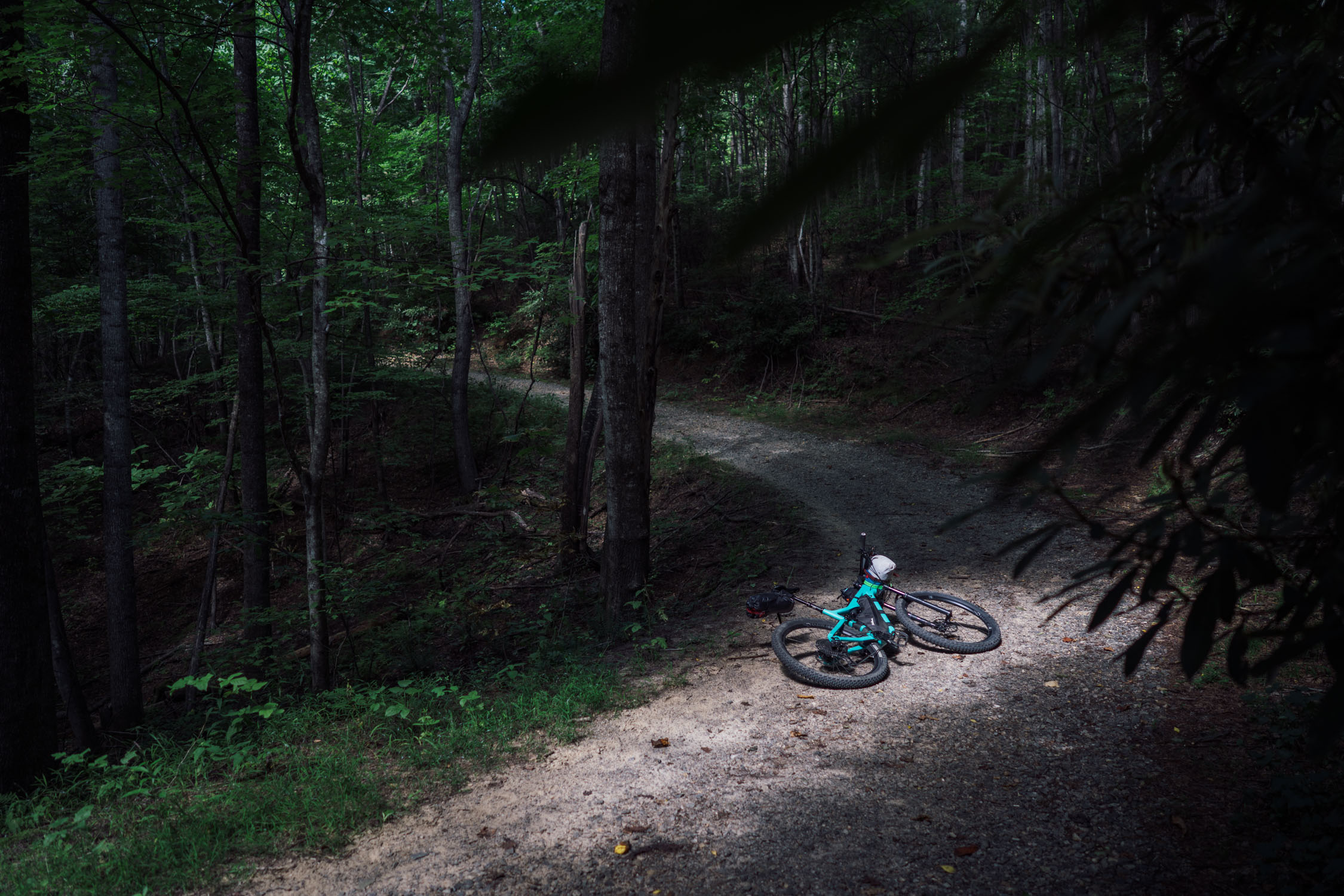
While Out Bikepacking
As mentioned, I wasn’t sold on the quickness of the Spearfish on gravel and pavement. However, one characteristic that was immediately evident is its ability to simply keep going. It’s a very stable and planted bike, so with the added comfort of full-suspension, it’s not a tiring bike to pedal over really long days. On the third day of the Arkansas High Country Route, I rode 118 miles with 8,000+ feet of elevation gain—a pretty big loaded day. I wasn’t really that fatigued, either.
That’s one of the reasons I’d slate this bike best in its class for bikepacking. But it’s also hard to ignore the Spearfish’s massive frame triangle. I was quite amazed at what all could fit in there. Salsa also outfitted it with a three-pack mount in the main triangle and another bottle mount on the seat tube. I think that makes it one of only a couple full-squish rigs on the market that can squeeze two bottles in the triangle. Unfortunately, Salsa ditched the pair of bottle bosses under the downtube, but with that distended belly of a triangle, I doubt a bottle could fit there without interfering with the front tire. Lastly, there’s a pair of mounts on the top tube for a bolt-on gas tank bag.
Lael Wilcox’s Take
Back in October, Lael Wilcox flew in to ride the TNGA. Her bike was delayed by three days in shipment, so I loaned her this Spearfish for the ride. Once she finished up I asked her to share what she thought, no filter. Here’s what she had to say:

I really enjoyed riding the Spearfish. Even at a size too big, it was super comfortable. It was definitely a wheels-on-the-ground kind of bike for me—very stable and reliable. Another positive was that it was really easy to pack with a generous frame bag. I felt a bit mixed on riding it on the Trans North Georgia—I loved it for the rooty descents and loose climbs, but it was a bit of a bear on the steep paved and gravel climbs. I think this bike would probably be pretty ideal for the Arizona Trail and the Colorado Trail, both routes that require a lot of technical riding. Choosing a bike for ultra-distance racing is always a compromise. Do you optimize for fast riding? Do you think more about comfort over time? I’m curious to experiment more with full-suspension bikes for rugged, long-distance riding.
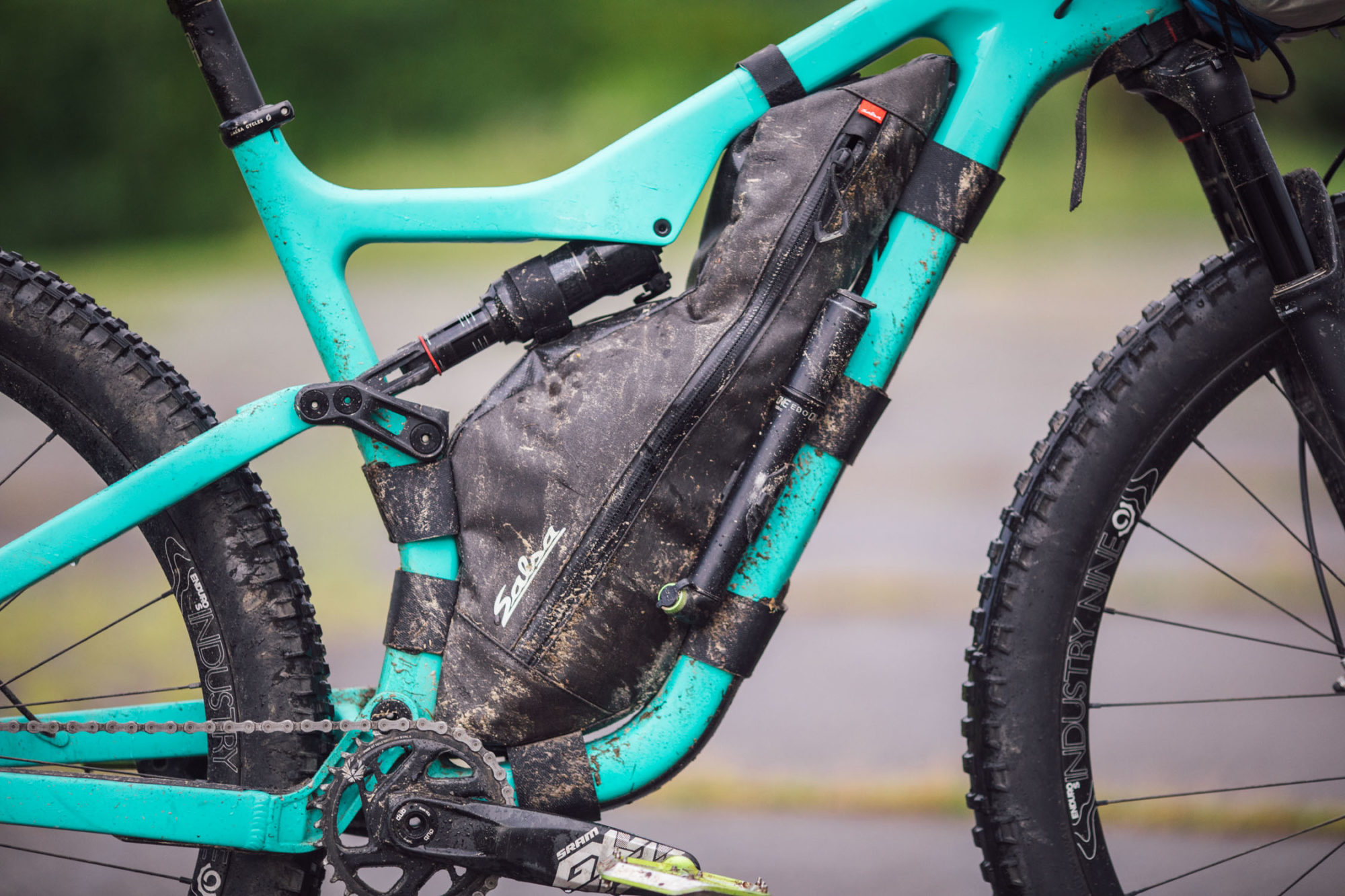
And last but not least, Salsa makes its own frame bag for the the Spearfish. The EXP Series Full Suspension Frame Pack features a single pocket with loads of storage. Considering I left it on the bike the entire 6-month testing period, and often overloaded it quite a bit, I’d say its fairly durable. Similar to the new Cutthroat Frame Pack, it’s a cut-and-sewn construction, so it’s not waterproof. Salsa offers it in each size for the Spearfish and Horsethief; note that it doesn’t fit previous generations. Ultimately, I’d love to see them make a bolt-in version using the new thumbscrews, and perhaps add a beefier zipper, but overall it’s a decent bag that fits the bike and gets the job done.
- Model Tested 2019 Salsa Spearfish GX Eagle (large)
- Weight (as tested) 28.09 pounds (12.74kg)
- Price $5199
- Place of Manufacture Taiwan
- Manufacturer’s Details SalsaCycles.com
Pros
- Best in class for bikepacking with a massive frame triangle and plenty of mounts
- Updated geometry ticks a lot of boxes; it’s quite nimble and handles as well as any trail bike I’ve ridden
- Very comfortable during long days of pedaling
- A little more XC than other short-travel 29er trail bikes in its class, which some people might appreciate, and others not
Cons
- Not quite as quick as I expected
- Frame is somewhat noisy
- SuperBoost hub spacing might limit your choice of wheelsets
- Salsa doesn’t offer a build with wide rims and 2.6” tires
Wrap Up
All in all, I had a lot of fun on the new Salsa Spearfish. It’s quite capable given its pedigree. It’s also delightfully limber and sprightly on the trail. There are certainly other short-travel 29ers out there that are better suited to aggressive riding, but the Spearfish fills its niche quite nicely. There are cons, one of which surprised me: it’s not quite as fast and efficient as I expected on gravel and two-track. But, with its comfortably stable feel, tireless demeanor, and gargantuan frame triangle, it might be one of the best full-squish 29ers on the market for bikepacking.
FILED IN (CATEGORIES & TAGS)
Bikepacking Bikes
Full-suspension
full-supension-bikepacking salsa-cyclesPlease keep the conversation civil, constructive, and inclusive, or your comment will be removed.






